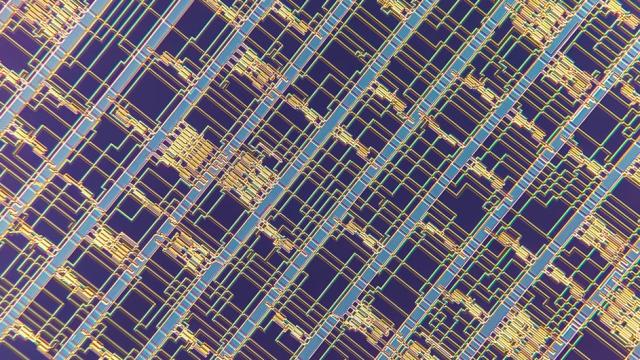Scientists at MIT built a 16-bit microprocessor out of carbon nanotubes and even ran a program on it, a new paper reports.
Silicon-based computer processors seem to be approaching a limit to how small they can be scaled, so researchers are looking for other materials that might make for useful processors.
It appears that transistors made from tubes of rolled-up, single-atom-thick sheets of carbon, called carbon nanotubes, could one day have more computational power while requiring less energy than silicon.
“This work is particularly exciting because carbon nanotubes are one of the most promising supplements in the future of beyond-silicon computers,” Max Shulaker, the study’s corresponding author and assistant professor at MIT, told Gizmodo.
Different forms of carbon, including carbon nanotubes, have a long and storied history, but you can attribute the mainstream hype surrounding them to their strength relative to their tiny size and their interesting electronic properties.
Scientists think that these properties will allow for transistors based on carbon nanotubes that are 10 times more energy efficient than silicon semiconductors.
Semiconductors, by the way, are materials that are both insulators (they don’t conduct an electric current) and conductors (they do conduct a current) based on the amount of voltage you apply to them. Transistors are electrical switches, today based on these semiconducting properties, and the central component of computer processors. Silicon and most carbon nanotubes are semiconductors.
Shulaker was the first author of a paper debuting a single-bit carbon nanotube processor in 2013, and the MIT group, led by Gage Hills and Christian Lau, has now debuted a functional 16-bit processor called RV16X-NANO that uses carbon nanotubes, rather than silicon, for its transistors.
The processor was constructed using the same industry-standard processes behind silicon chips — Shulaker explained that it’s basically just a silicon microprocessor with carbon nanotubes instead of silicon.
The processor works well enough to run HELLO WORLD, a program that simply outputs the phrase “HELLO WORLD” and is the first program that most coding students learn. Shulaker compared its performance to a processor you’d buy at hobby shop to control a small robot.
Constructing the chip begins with a silicon wafer. The scientists dip the wafer into a solution containing carbon nanotubes dissolved in a liquid called toulene. Once the wafer dries, they etch away the carbon nanotubes except those used as the transistors.
Then, they add the metal contacts, which would attach to wires, and finally slice the wafer into microchips. I asked whether each carbon nanotube transistor looked like a tiny pile of dried spaghetti, and Shulaker didn’t say no.
But there’s a catch. A small but notable fraction of carbon nanotubes act like conductors instead of semiconductors. Shulaker explained that study author Hills devised a technique called DREAM, where the circuits were specifically designed to work despite the presence of metallic nanotubes. And of course, the effort relied on the contribution of every member of the relatively small team. The researchers published their results in the journal Nature today.
“This is quite an achievement,” Franz Kreupl, professor of Hybrid Electronic Systems at TU Munich in Germany not involved in the study, told Gizmodo. He explained that much research has moved on to two-dimensional materials like graphene, and that carbon nanotubes are comparatively hard to work with.
The MIT team crafted their carbon nanotube processor at just below 325 degrees Celsius. This sounds quite hot, but producing silicon transistors requires temperatures higher than 1,000 degrees Celsius. These lower temperatures make it easier to add additional layers on top of the first layer and produce higher-density, three-dimensional chips than silicon would allow, Kreupl said.
You may have heard of Moore’s law, the conjecture that the number of transistors on dense microchips would double every two years (which has held for decades). But eventually and probably soon, Moore’s law will bump up against the limits set by the laws of physics.
Scientists are looking toward these new devices that could keep Moore’s law going or at least provide more performance increases from materials other than silicon. Carbon nanotubes can be one of those materials.
Ultimately, the goal isn’t to erase the decades of progress made by silicon microchips — perhaps companies can integrate carbon nanotube pieces into existing architectures.
This is still a proof-of-concept. The team still hasn’t calculated the chip’s performance or whether it’s actually more energy efficient than silicon — the gains are based on projections. But Shulaker hopes that the team’s work will serve as a roadmap toward incorporating carbon nanotubes in computers for the future.
